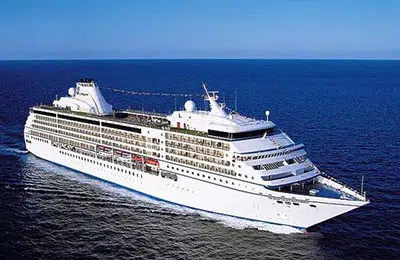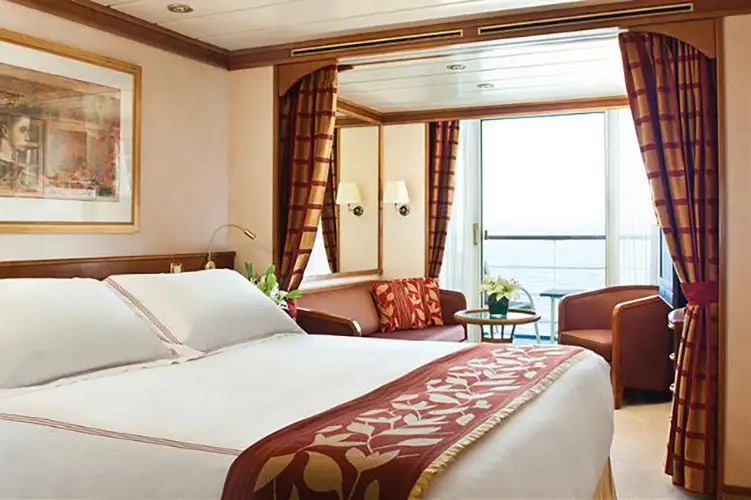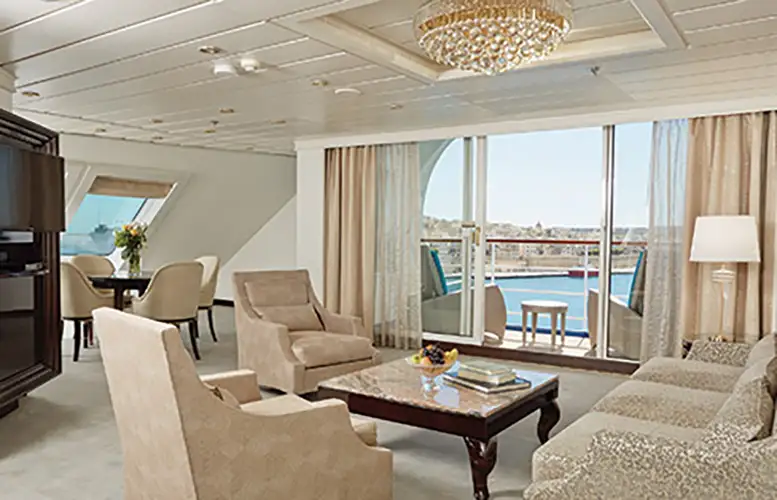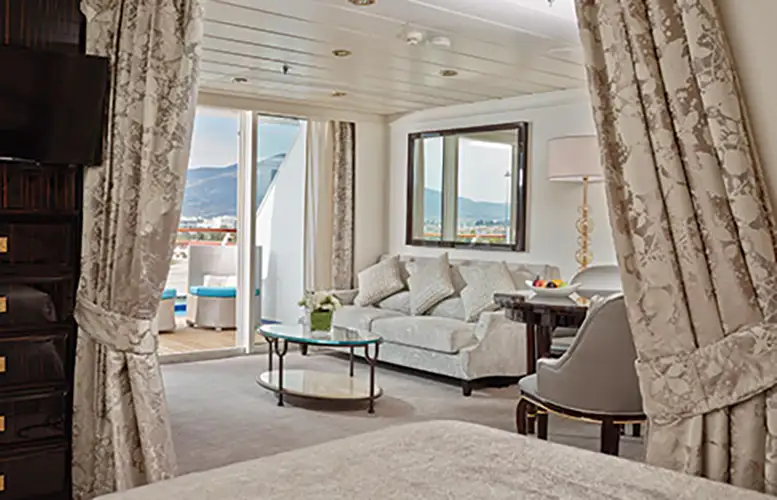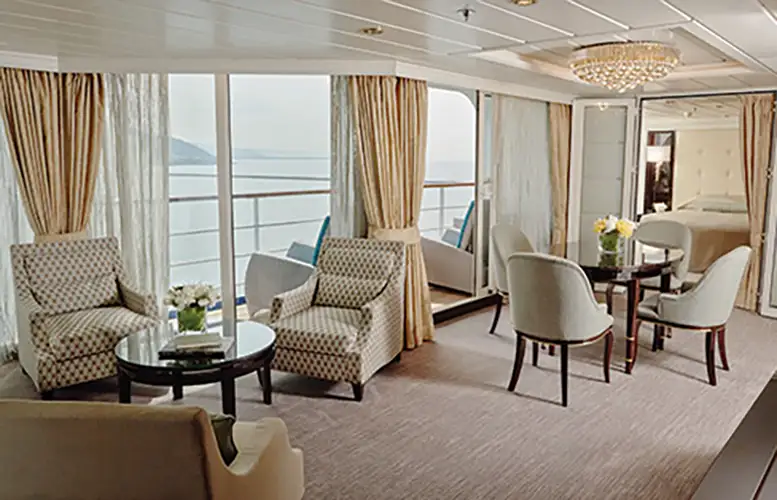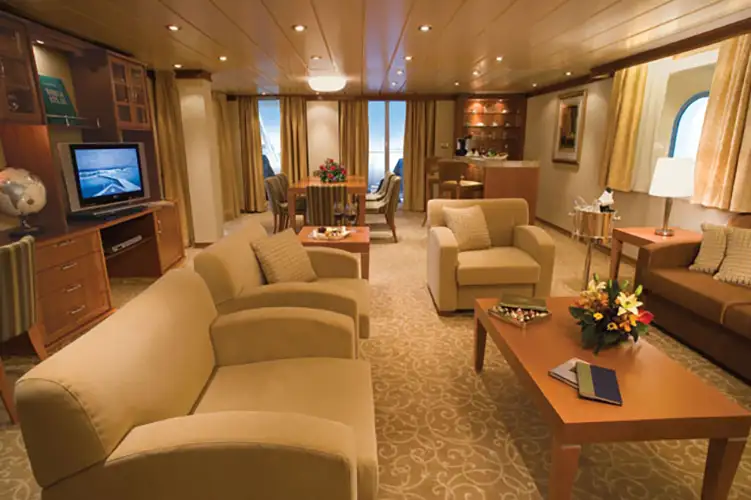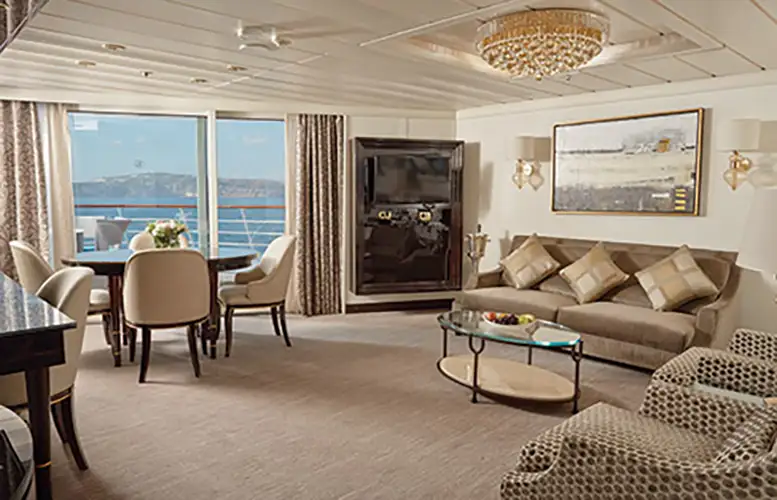Regent Northern Europe: 18 nights from Le Havre with Seven Seas Mariner
Aug 12, 2025
France, Belgium, Netherlands, Denmark, Poland, Lithuania, Latvia, Sweden, Norway
Cruise itinerary
Departure Port: Le Havre ➞
Landing: Oslo
-
Tuesday, August 12, 2025 - 7:00 PMLe Havre
-
Wednesday, August 13, 2025 8:00 AM - 7:00 PMCalais
-
Thursday, August 14, 2025 8:00 AM - not foundAntwerp
-
Friday, August 15, 2025 not found - 5:00 PMAntwerp
-
Saturday, August 16, 2025 10:00 AM - 8:00 PMAmsterdam
-
Sunday, August 17, 2025Navigation
-
Monday, August 18, 2025 12:00 PM - not foundCopenaghen
-
Tuesday, August 19, 2025 not found - 6:00 PMCopenaghen
-
Wednesday, August 20, 2025Navigation
-
Thursday, August 21, 2025 10:00 AM - 7:00 PMRonne
-
Friday, August 22, 2025 9:00 AM - 7:00 PMGdynia
-
Saturday, August 23, 2025 7:00 AM - 4:00 PMKlaipeda
-
Sunday, August 24, 2025 9:00 AM - 6:00 PMRiga
-
Monday, August 25, 2025 1:00 PM - not foundStockholm
-
Tuesday, August 26, 2025 not found - 5:00 PMStockholm
-
Wednesday, August 27, 2025 8:00 AM - 5:00 PMVisby
-
Thursday, August 28, 2025Navigation
-
Friday, August 29, 2025 9:00 AM - not foundOslo
-
Saturday, August 30, 2025 not found 9:00 PMOslo
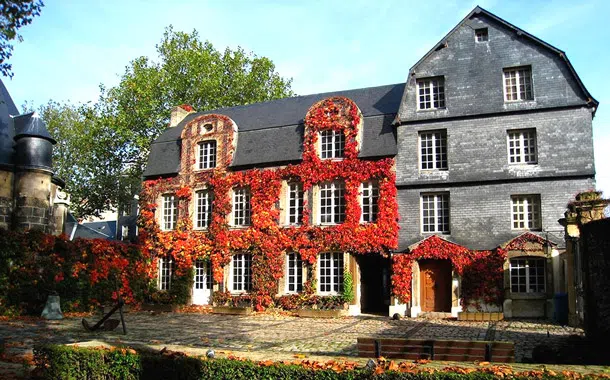
Le Havre
Le Havre is worth a visit, not only as a stopover on the way to Paris or other inland destinations, but also as one of the great examples of post-war planning. It is a strange and strangely fascinating city, listed by
Unesco as a World Heritage Site.
Wandering through the streets of the seaside town of Le Havre, one might think one had stumbled upon a forgotten outpost of the Eastern Bloc. Obliterated by World War II bombings, the city was completely rebuilt by the Belgian architect Auguste Perret and, what emerged from the ashes of old Le Havre, is a kind of love letter to concrete: endless rows of blocks of buildings, straight avenues stretching out from the central square, dominated by the 100 m high 'Stalinist Baroque' style cathedral, looks like something straight out of the pages of '1984'.
Walking through the streets of the seaside city of Le Havre, you might think you've stumbled into a forgotten outpost of the Eastern Bloc. Erased by the bombings of the Second World War, the city was completely rebuilt by the Belgian architect Auguste Perret and, what emerged from the ashes of old Le Havre, is a kind of love letter to concrete: endless rows of blocks of buildings, straight avenues that extend out of the central square, dominated by the 100 m high cathedral in 'Stalinist Baroque' style, looks like something directly from the pages of '1984'.
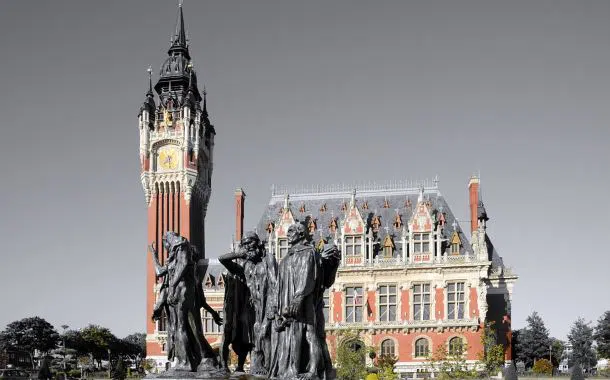
Calais
Calais is a city located in the north of France close to the English Channel and is in the middle of three capitals, Paris, Brussels and London. It was probably founded by the Romans and then inhabited during the Middle Ages by peoples of Dutch origin, a period during which Calais became a fishing village. Then England took possession of this city in the 14th century and made it very rich thanks to the trade in metals and fabrics. Currently Calais is an important port especially for its connections with Dover. In about an hour and a half by ferry, in fact, it is possible to move from one city to another. Calais offers its visitors some noteworthy attractions, including the building in which the Town Hall is located, which is rather recent, dating back to the 19th century and was built in neo-Flemish style. Very particular is the Citadel, a fortification designed to defend the city from external attacks. Here English sovereigns lived, such as Edward II in the 16th century. The Museum of Fine Arts preserves paintings by famous authors, including Picasso. In addition to the paintings, the museum offers sculptures and installations worthy of note, such as those by Dubuffet. Calais also offers excellent entertainment opportunities. Walking along Rue Royale you can go shopping or try the local gastronomic specialties in the typical restaurants that line the street. If you love lace, Calais is the right place to buy handmade curtains and tablecloths according to the ancient tradition of this place.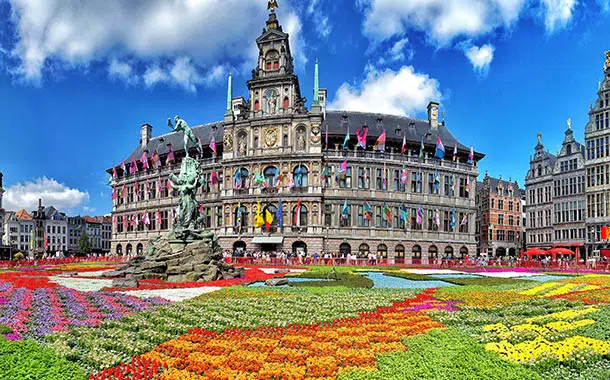
Antwerp
Antwerp, located in the heart of Belgium, is a city that captivates lots of visitors with its rich history, impressive architecture and its vibrant culturale scene. Renowned worldwide as the capital of diamonds, Antwerp offers much more than glittering jewels; it is a place where art, fashion and design come together to create a unique and stimulating atmoshpere. Antwerp cruises are the best way to discover this cosmopolitan city, sailing along the Scheldt River looking at urban landscapes that tell stories full of trade, art and history.
Antwerp's buttom is the imponent gothic Cathedral, the Cathedral of Our Lady, that dominates the city skyline with its elegant spire. Not only is this unique building an architectural masterpiece, but it also host some of the most important Pieter Paul Ruben's works, one of the most famous Flemish painter born in the city. Not so distant from the Cathedral, the Grote Markt, the main square, is surrounded by medieval guilds that nowadays house cafes and restaurants, offering a perfect example of Flemish Renaissance architecture.
In addition to its historical heritage, Antwerp is a fashion capital and its fashion districts attracts emerging designers and famous brands. Visitors can take a look at different unique shops and designers' showrooms, having the opportunity to see the latest Flemish fashion trends. Antwerp's art scene is also very vibrant, there are many cultural experiences such as the ones in Plantin-Moretus Museum, UNESCO World Heritage site, and M HKA, the contemporary art museum of the city.
Enjoy a cruise that includes Antwerp in your itinerary is an incredible experience that offers the opportunity to immerse youself in the history, art and culture of one of Belgium's most fascinating cities.
Antwerp, with its unique mix of tradition and innovation, promises an unforgettable, full of discovers and inspirations stay.
The beating heart of Antwerp is its imposing Gothic cathedral, the Cathedral of Our Lady, which dominates the city's skyline with its elegant spire. This magnificent building is not only an architectural masterpiece, but also houses some of the most important works by Pieter Paul Rubens, the famous Flemish painter born in this city. A few steps from the cathedral, the Grote Markt, the main square, is surrounded by medieval guilds which today house cafes and restaurants, offering a perfect example of Flemish Renaissance architecture.
In addition to its historical heritage, Antwerp is also a fashion capital, with the fashion district attracting emerging designers and established brands. Visitors can explore unique shops and design showrooms, immersing themselves in the latest trends in Belgian fashion. Antwerp's art scene is also lively, with museums such as the Plantin-Moretus Museum, a UNESCO heritage site, and the contemporary M HKA, which offer a wide spectrum of cultural experiences.
Participating in a cruise that includes Antwerp in its itinerary is an enriching experience, offering the opportunity to immerse yourself in the history, art and culture of one of the most fascinating cities in Belgium. Antwerp, with its unique mix of tradition and innovation, promises an unforgettable stay, full of discoveries and inspirations.

Antwerp
Antwerp, located in the heart of Belgium, is a city that captivates lots of visitors with its rich history, impressive architecture and its vibrant culturale scene. Renowned worldwide as the capital of diamonds, Antwerp offers much more than glittering jewels; it is a place where art, fashion and design come together to create a unique and stimulating atmoshpere. Antwerp cruises are the best way to discover this cosmopolitan city, sailing along the Scheldt River looking at urban landscapes that tell stories full of trade, art and history.
Antwerp's buttom is the imponent gothic Cathedral, the Cathedral of Our Lady, that dominates the city skyline with its elegant spire. Not only is this unique building an architectural masterpiece, but it also host some of the most important Pieter Paul Ruben's works, one of the most famous Flemish painter born in the city. Not so distant from the Cathedral, the Grote Markt, the main square, is surrounded by medieval guilds that nowadays house cafes and restaurants, offering a perfect example of Flemish Renaissance architecture.
In addition to its historical heritage, Antwerp is a fashion capital and its fashion districts attracts emerging designers and famous brands. Visitors can take a look at different unique shops and designers' showrooms, having the opportunity to see the latest Flemish fashion trends. Antwerp's art scene is also very vibrant, there are many cultural experiences such as the ones in Plantin-Moretus Museum, UNESCO World Heritage site, and M HKA, the contemporary art museum of the city.
Enjoy a cruise that includes Antwerp in your itinerary is an incredible experience that offers the opportunity to immerse youself in the history, art and culture of one of Belgium's most fascinating cities.
Antwerp, with its unique mix of tradition and innovation, promises an unforgettable, full of discovers and inspirations stay.
The beating heart of Antwerp is its imposing Gothic cathedral, the Cathedral of Our Lady, which dominates the city's skyline with its elegant spire. This magnificent building is not only an architectural masterpiece, but also houses some of the most important works by Pieter Paul Rubens, the famous Flemish painter born in this city. A few steps from the cathedral, the Grote Markt, the main square, is surrounded by medieval guilds which today house cafes and restaurants, offering a perfect example of Flemish Renaissance architecture.
In addition to its historical heritage, Antwerp is also a fashion capital, with the fashion district attracting emerging designers and established brands. Visitors can explore unique shops and design showrooms, immersing themselves in the latest trends in Belgian fashion. Antwerp's art scene is also lively, with museums such as the Plantin-Moretus Museum, a UNESCO heritage site, and the contemporary M HKA, which offer a wide spectrum of cultural experiences.
Participating in a cruise that includes Antwerp in its itinerary is an enriching experience, offering the opportunity to immerse yourself in the history, art and culture of one of the most fascinating cities in Belgium. Antwerp, with its unique mix of tradition and innovation, promises an unforgettable stay, full of discoveries and inspirations.
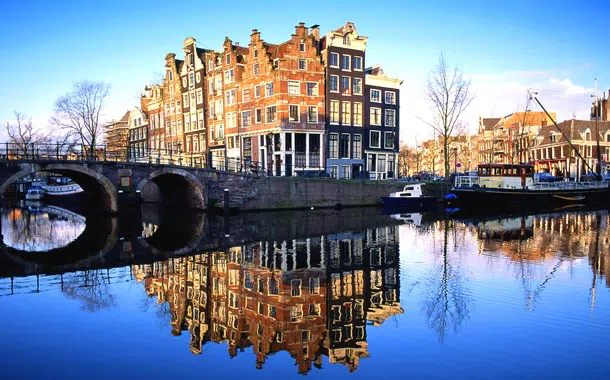
Amsterdam
Amsterdam is a charming city with a particularly relaxing and serene atmosphere, despite its large size. The city has been a World Heritage Site since 2010 and has buildings dating back to the sixteenth and seventeenth centuries. It is no coincidence that it is one of the most visited cities in the world.
The structure of the city is determined by a network of charming waterways. The historic center, which dates back to the 13th century, is surrounded by five concentric canals - the Grachtengordel - built in the 17th century as part of a perfectly successful expansion project designed to create a unique and refined urban environment.
It is here that the city's mercantile class built its characteristic gabled houses, with bright, gracefully decorated colors, whose romantic features are reflected in the olive-green waters of the picturesque canals.
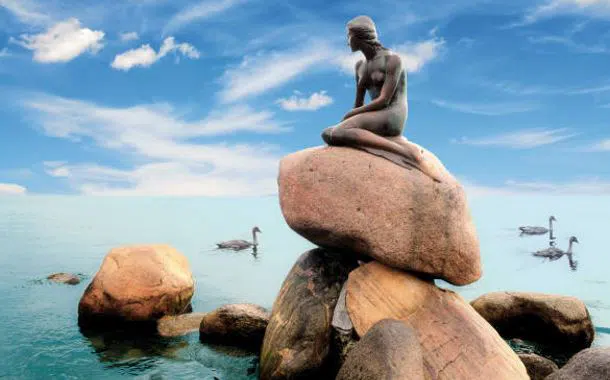
Copenaghen
Copenhagen, literally "port of the merchants", is the capital of Denmark and one of the country's most densely populated cities. Originally a city mainly inhabited by fishermen, it became a fundamentally important port for trade.
Copenhagen is a year-round tourist destination and in summer the flow of tourists increases considerably thanks to Northern Europe cruises.
It is very common to add a stay in the city before a cruise, to take in its distinguishing relaxing atmosphere and see what it has to offer. Among its famous attractions you cannot miss the statue of the Mermaid which is located right at the entrance to the port and the Tivoli Gardens, one of the world's largest amusement parks, opened in 1843 and loved by everyone.
Copenhagen (København in Danish and 'Copenaga' in Italian [no source]) is the capital and the most populous city of Denmark with 518,574 inhabitants in the municipality (1,167,569 in the urban area). The city stretches across the islands of Sjælland and Amager and is separated from the city of Malmö in Sweden by the strait of Øresund.

Copenaghen
Copenhagen, literally "port of the merchants", is the capital of Denmark and one of the country's most densely populated cities. Originally a city mainly inhabited by fishermen, it became a fundamentally important port for trade.
Copenhagen is a year-round tourist destination and in summer the flow of tourists increases considerably thanks to Northern Europe cruises.
It is very common to add a stay in the city before a cruise, to take in its distinguishing relaxing atmosphere and see what it has to offer. Among its famous attractions you cannot miss the statue of the Mermaid which is located right at the entrance to the port and the Tivoli Gardens, one of the world's largest amusement parks, opened in 1843 and loved by everyone.
Copenhagen (København in Danish and 'Copenaga' in Italian [no source]) is the capital and the most populous city of Denmark with 518,574 inhabitants in the municipality (1,167,569 in the urban area). The city stretches across the islands of Sjælland and Amager and is separated from the city of Malmö in Sweden by the strait of Øresund.
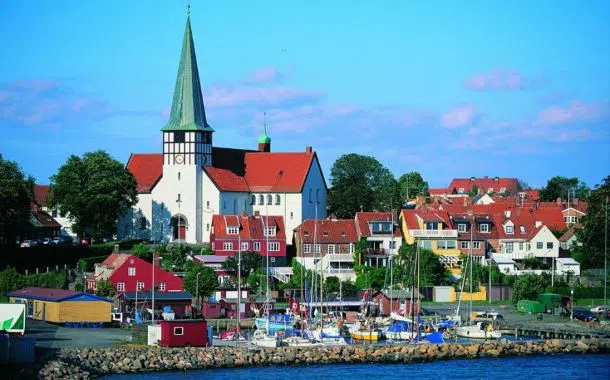
Ronne
Rønne is the main city of the small rocky island of Bornholm, it is also a port metropolis that connects Bornholm in Denmark (Køge, south of Copenhagen), Sweden, Germany, and Poland. The city of Ronne and Nexø were bombed after the end of the Second World War. Despite this, there are still many old buildings rich in history. The Swedish State donated 175 particular red wooden houses to help rebuild the city, which are still visible today. Cultural capital of the island: it has the oldest theater in Denmark, the Bornholm Concert Hall. Considered as a starting point for excursions around the island, it has been given the name of Pearl of the Baltic. With its beautiful countryside, rocky coasts and sandy beaches, the place is a popular tourist destination. Discover the medieval fortress of Hammershus, the largest in Northern Europe, a round church from the Middle Ages, a traditional mill, herring smoke, and much more. The easternmost point of Denmark is the island of Christiansø, characterized by the absence of cars. The island mainly lives on fishing, handicrafts, agriculture, and summer tourism, but is also committed to the growth and development of renewable energy.
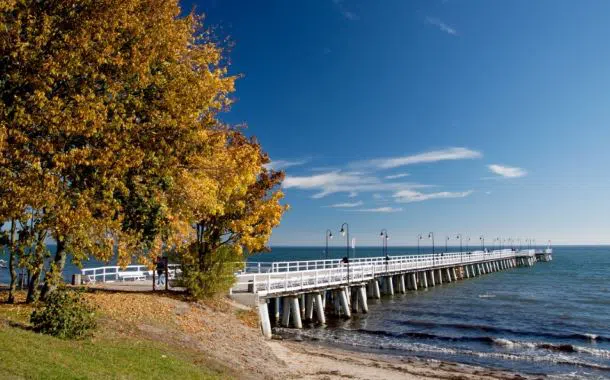
Gdynia
Gdynia is a town located in the north of Poland, in the Gulf of Gdansk and Warsaw, the capital, is about 380 km away. Part of a combination of three cities, (Gdynia, Gdansk and Sopot) represent the "lithe" a population of over a million inhabitants. Once known as a small fishing village, the city has developed considerably, especially after the end of the Second World War, becoming the largest Polish port. Its unique and modern environment delights tourists both for its maritime infrastructure and for its cultural life. The territory welcomes various cultural events such as the Polish Film Festival, nicknamed the "Polish Cannes." The outdoor music festival, which brings together various international artists, is proposed every year near the local beach. The city is particularly populated in summer: tourists are attracted thanks to its proximity to the sea and its large sandy beaches. Throughout the year, it plays the role of one of the main seaports in Poland and the site of an important shipyard. Near the port, you will find museums of various ships that can be visited. The country is relatively modern, however, vacationers who come to stay in this territory are often looking for its past and its historical buildings, such as the popular and ancient church of San Michele Arcangelo or the neo-Gothic house of the XVII century. The hills and coasts also intrigue nature lovers. The walk, with a length of 1.5 km, is very popular. In short, this place will be a perfect destination for those seeking rest but without giving up the pleasures of life, offering you a wide range of activities, including markets, clubs and excellent restaurants.
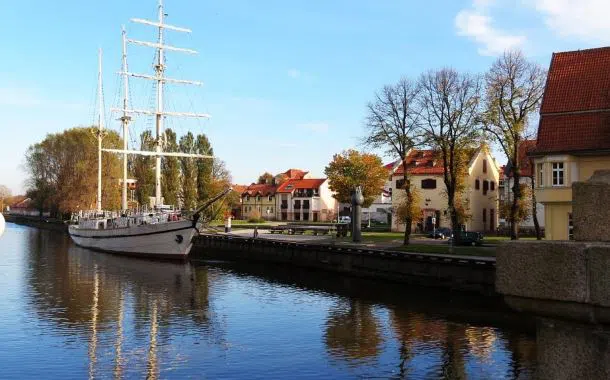
Klaipeda
The city is located near the Niemen delta, at the northern end of the Neringa Peninsula passing through the Strait of Memel. It connects Sweden, Denmark and Germany by ferry.
Lithuania's main seaport, Klaipėda is the third largest city in Lithuania after Vilnius and Kaunas. Long contested between the Kingdom of Lithuania and the Teutonic Knights.
Starting with a visit to the old town, you can see old houses, adorned with bushes of grapes. Several architectural buildings recall the designs of contemporary stories and small houses with tiled roofs surrounded by flowers and bushes.
The streets of the old town are winding and labyrinthine. Theatre Square is the central part of the old town of Klaipeda. Here you can see Simon Fontana Dach and another permanent symbol of the city, the sculpture of Anika Toravy, a historical figure in one of the old Lithuanian songs.
In addition to the beautiful walks through the streets of the city, you absolutely must visit the Museum of Clocks. Here are the collections of the first devices with which our ancestors determined the time. They vaguely resemble the clocks that are used today. You will be surprised to know that there are water clocks and fire clocks. A variety of sundials and hourglasses will broaden your understanding of production mechanisms. The Museum is another notable cultural institution.
It is possible to stroll and see many monuments in the sculpture park, to finish the tour with a visit to the Maritime Museum. Klaipeda will prepare for its guests with lots of fun for all tastes. It only remains to make the right choice and enjoy the holiday.
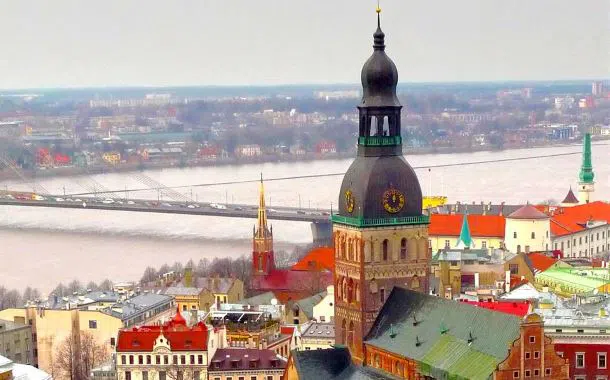
Riga
Riga, the capital of Latvia and the largest metropolis in the Baltic States, has the craziest nightlife of the three states.
The city is located near the Daugava Rigaian bay. Even today, Riga is very interesting when it comes to business opportunities and activities. The old port is famous for its Art Nouveau buildings, generous in constructions and a well-preserved center. After the particularly depressed economic period after independence in 1991 the country lost many of its industries in the great post-Soviet whale hunt, it is now highly developed in its education system and has a great cultural value and therefore cannot be considered as the backbone of the Latvian economy, as well as the largest center of education and science. Every year numerous exhibitions, conferences and cultural events take place in Riga and contribute to the city's international reputation. And it is charming to walk through the alleys of the historic center to admire splendid buildings such as the House of the Three Brothers, they are three houses next to each other in Maza Pils iela where a museum of architecture is currently housed, the House of the Blackheads, one of the best-known buildings in the Old Town. Don't miss the churches of St. Peter and St. John and the Cathedral.
Riga has many bars, clubs and discos, mainly located in the historic center.
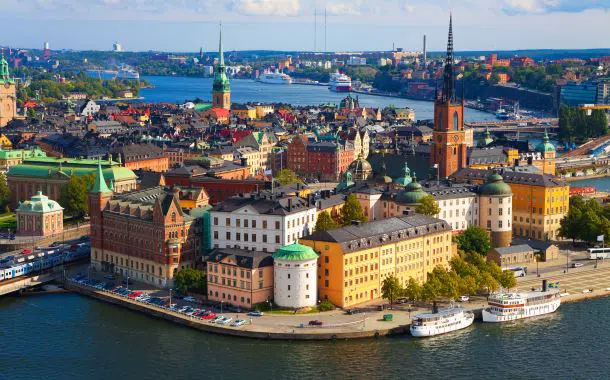
Stockholm
The capital of Sweden is considered one of the most beautiful cities in the world, a mirage of buildings in saffron colors and iridescent terracottas between the blue of the water and the even bluer skies of the Swedish summer, or candid, covered with snow and dotted with winter lights. It is also a lively, modern city, famous for the production of elegant design, cutting-edge fashion and world-class nightclubs.
The old town, Gamla Stan, is a compact little labyrinth seemingly built for small, thin people. The red, orange, and vanilla stucco walls of the buildings that seem to curve in towards each other house countless souvenir shops and ice cream parlors.
Just south of Gamla Stan is another island-neighborhood, Södermalm, where hills high waterfront are embellished by beautiful residences and the main avenues are lined with bohemian shops, art galleries, and Clubs. On the other side of Gamla Stan is the main city center, a bustling metropolis where boutiques and restaurants enliven the cool Swedish evenings.

Stockholm
The capital of Sweden is considered one of the most beautiful cities in the world, a mirage of buildings in saffron colors and iridescent terracottas between the blue of the water and the even bluer skies of the Swedish summer, or candid, covered with snow and dotted with winter lights. It is also a lively, modern city, famous for the production of elegant design, cutting-edge fashion and world-class nightclubs.
The old town, Gamla Stan, is a compact little labyrinth seemingly built for small, thin people. The red, orange, and vanilla stucco walls of the buildings that seem to curve in towards each other house countless souvenir shops and ice cream parlors.
Just south of Gamla Stan is another island-neighborhood, Södermalm, where hills high waterfront are embellished by beautiful residences and the main avenues are lined with bohemian shops, art galleries, and Clubs. On the other side of Gamla Stan is the main city center, a bustling metropolis where boutiques and restaurants enliven the cool Swedish evenings.
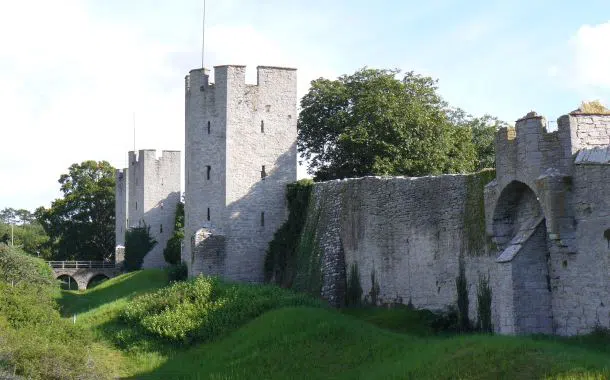
Visby
Visby is the capital of Gotland, the largest island in the Baltic Sea, located halfway between Sweden and Latvia, one of the preeminent medieval cities of Scandinavia and included in the UNESCO World Heritage List.
Visby is a popular vacation destination for Scandinavians during the summer and receives thousands of tourists every year. And 'by far the most populous location outside the Swedish mainland.
Every August, it hosts its medieval week, with authentic dress, parties and jousting. But there is no need to visit Visby in August to get a sense of its medieval history. Just follow the streets that wind throughout the city, take a tour of its historic center and visit the 13th century church.
The Fornsal Museum highlights 8,000 years of local history. The collection includes: stones painted with a date prior to the Vikings, old tombstones, silver treasures and medieval sculptures.
In the city of Gotland has an extraordinary collection of medieval churches, 93 of which are still in use today. Some still have medieval glass paintings and the majority of them contain medieval frescoes.
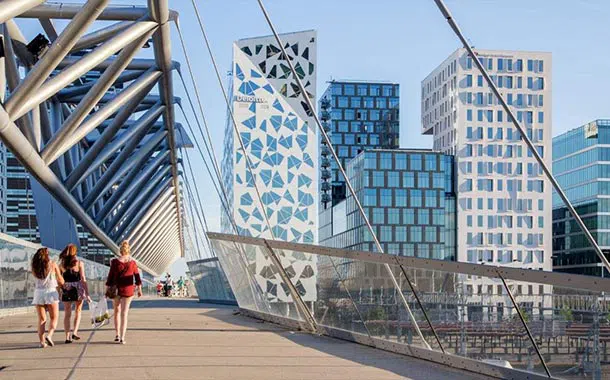
Oslo
Oslo, located in the south-eastern part of the country, is the capital and largest city of Norway. Oslo is a lively city that perfectly blends its rich history with modern urban development, making it a dynamic and attractive place to live and visit.
It was founded around 1040 by King Harald Hardrada and became the capital of the country in 1299 under King Håkon V. The city was partially destroyed by a fire in 1624 and its reconstruction began under the reign of King Christian IV. King Christian IV renamed the city Christiania. The original name, Oslo, was restored only in 1925. Oslo is known for its beautiful natural landscapes, including forests, hills and lakes. Thanks to its beautiful landscapes, it is possible to practice numerous outdoor activities such as hiking, skiing and canoeing.
These unique features make the city an ideal destination for nature lovers. The city is home to several world-renowned museums, including the Viking Ship Museum, the Munch Museum (dedicated to the works of Edvard Munch, famous for “The Scream”), and the National Gallery. Don't miss the opportunity to visit one of these museums and share your photos with your friends! Every year, Oslo hosts one of the most important cultural events, the Nobel Peace Prize, which is awarded annually in the city at the City Hall.

Oslo
Oslo, located in the south-eastern part of the country, is the capital and largest city of Norway. Oslo is a lively city that perfectly blends its rich history with modern urban development, making it a dynamic and attractive place to live and visit.
It was founded around 1040 by King Harald Hardrada and became the capital of the country in 1299 under King Håkon V. The city was partially destroyed by a fire in 1624 and its reconstruction began under the reign of King Christian IV. King Christian IV renamed the city Christiania. The original name, Oslo, was restored only in 1925. Oslo is known for its beautiful natural landscapes, including forests, hills and lakes. Thanks to its beautiful landscapes, it is possible to practice numerous outdoor activities such as hiking, skiing and canoeing.
These unique features make the city an ideal destination for nature lovers. The city is home to several world-renowned museums, including the Viking Ship Museum, the Munch Museum (dedicated to the works of Edvard Munch, famous for “The Scream”), and the National Gallery. Don't miss the opportunity to visit one of these museums and share your photos with your friends! Every year, Oslo hosts one of the most important cultural events, the Nobel Peace Prize, which is awarded annually in the city at the City Hall.
